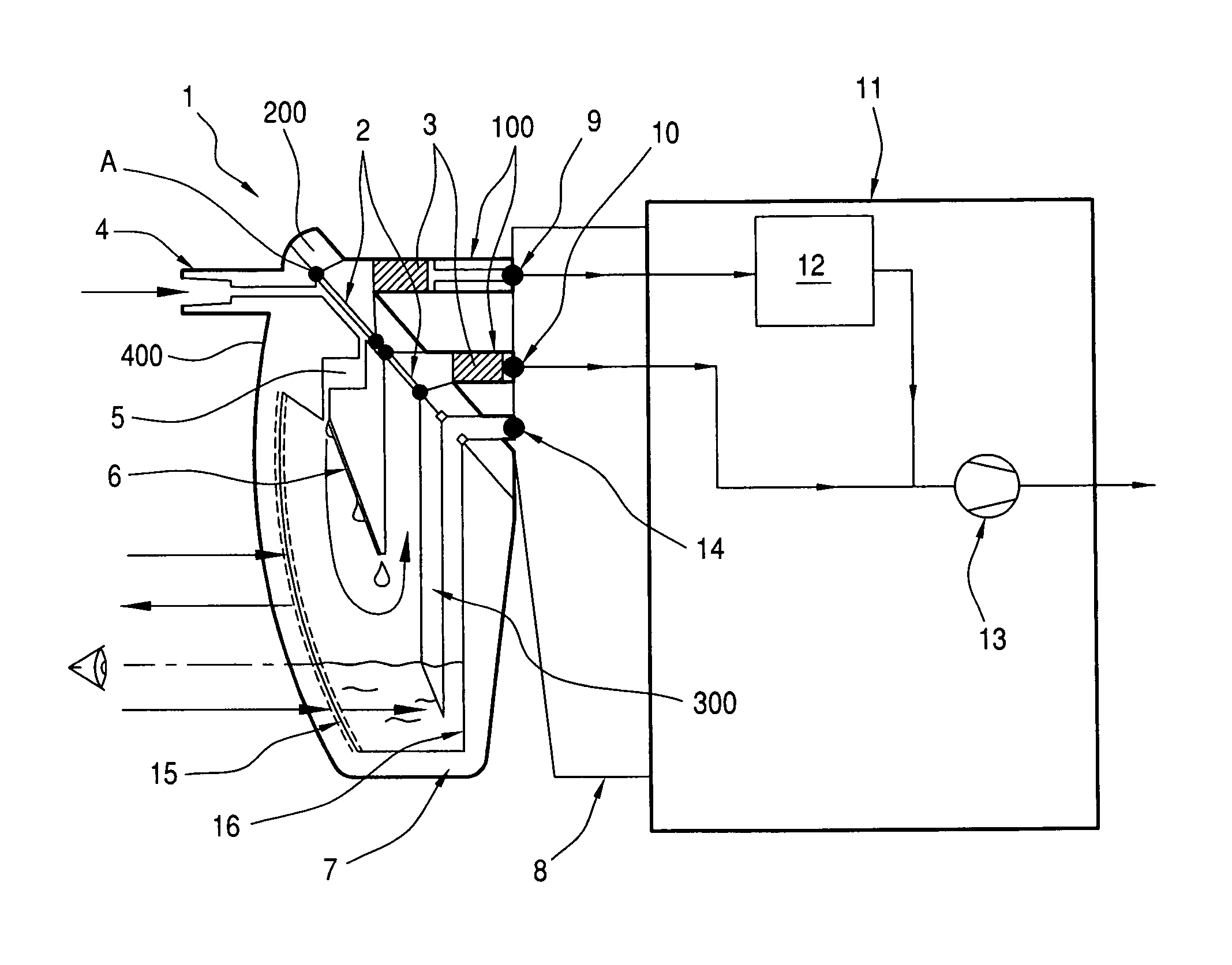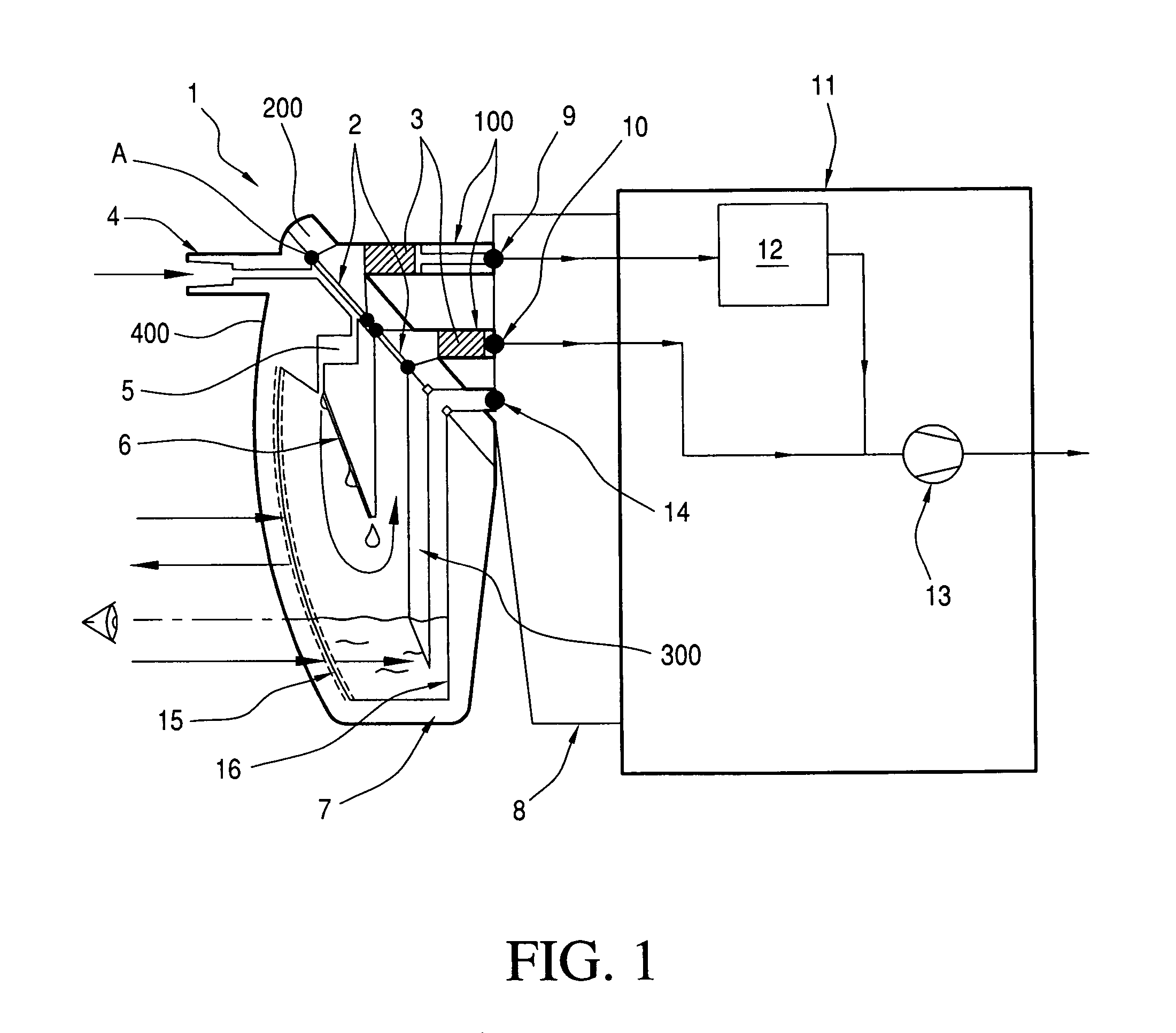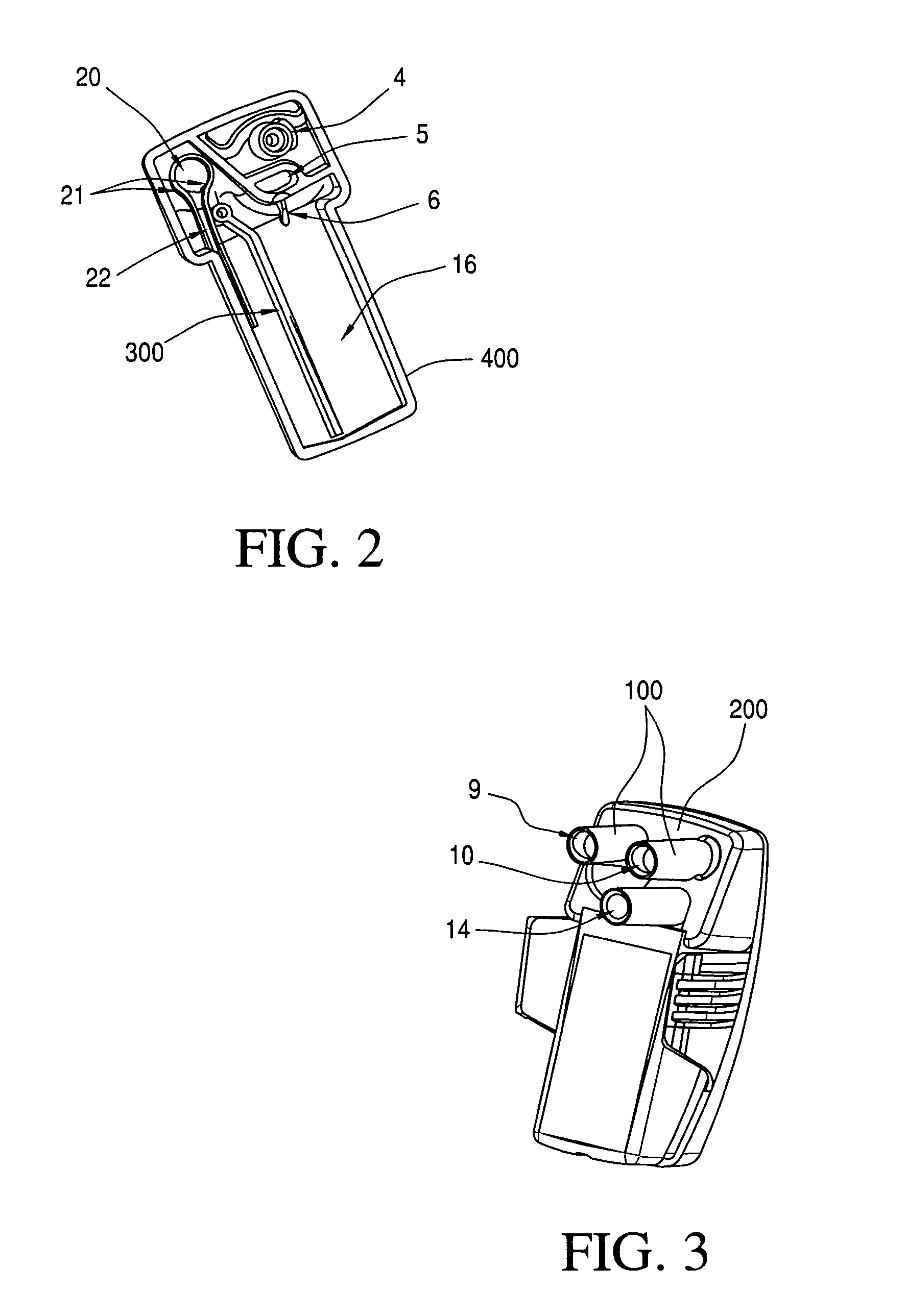Water trap
a water trap and water filter technology, applied in the direction of respirator, separation process, breathing protection, etc., can solve the problems of foreign substances, which are transported, collect on the surface of the ptfe-membrane, and pass through liquid or condensate, so as to prevent the disturbance of concentration courses and improve the readability of the fill level
- Summary
- Abstract
- Description
- Claims
- Application Information
AI Technical Summary
Benefits of technology
Problems solved by technology
Method used
Image
Examples
Embodiment Construction
[0027]The water trap 1 in FIG. 1 is releasably attached to the holder 8. The holder 8 is connected downstream to the gas measuring module 11 via three ports, that is, connections, namely an analysis port 9, a purge port 10 and a service port 14. The gas measuring module 11 has one or more gas sensors 12 to measure the respiratory gas to be analyzed as well as a pump 13 for moving the measurement gas or gas being measured. The gas sensors 12 are, for example, infrared optical sensors to determine the concentration of selected respiratory gas components. The measurement gas flows from an aspiration location (not shown) in a patient-respiratory gas line via the measurement gas inlet 4 into the water trap 1. Via two semipermeable PTFE-membranes 2, the measurement gas is separated from moisture contained therein with the liquid being captured in the tank 7.
[0028]An intermediate piece 200 is disposed between housing member 400 and the holder 8. As shown in FIG. 1, the two semipermeable me...
PUM
 Login to View More
Login to View More Abstract
Description
Claims
Application Information
 Login to View More
Login to View More - R&D
- Intellectual Property
- Life Sciences
- Materials
- Tech Scout
- Unparalleled Data Quality
- Higher Quality Content
- 60% Fewer Hallucinations
Browse by: Latest US Patents, China's latest patents, Technical Efficacy Thesaurus, Application Domain, Technology Topic, Popular Technical Reports.
© 2025 PatSnap. All rights reserved.Legal|Privacy policy|Modern Slavery Act Transparency Statement|Sitemap|About US| Contact US: help@patsnap.com



